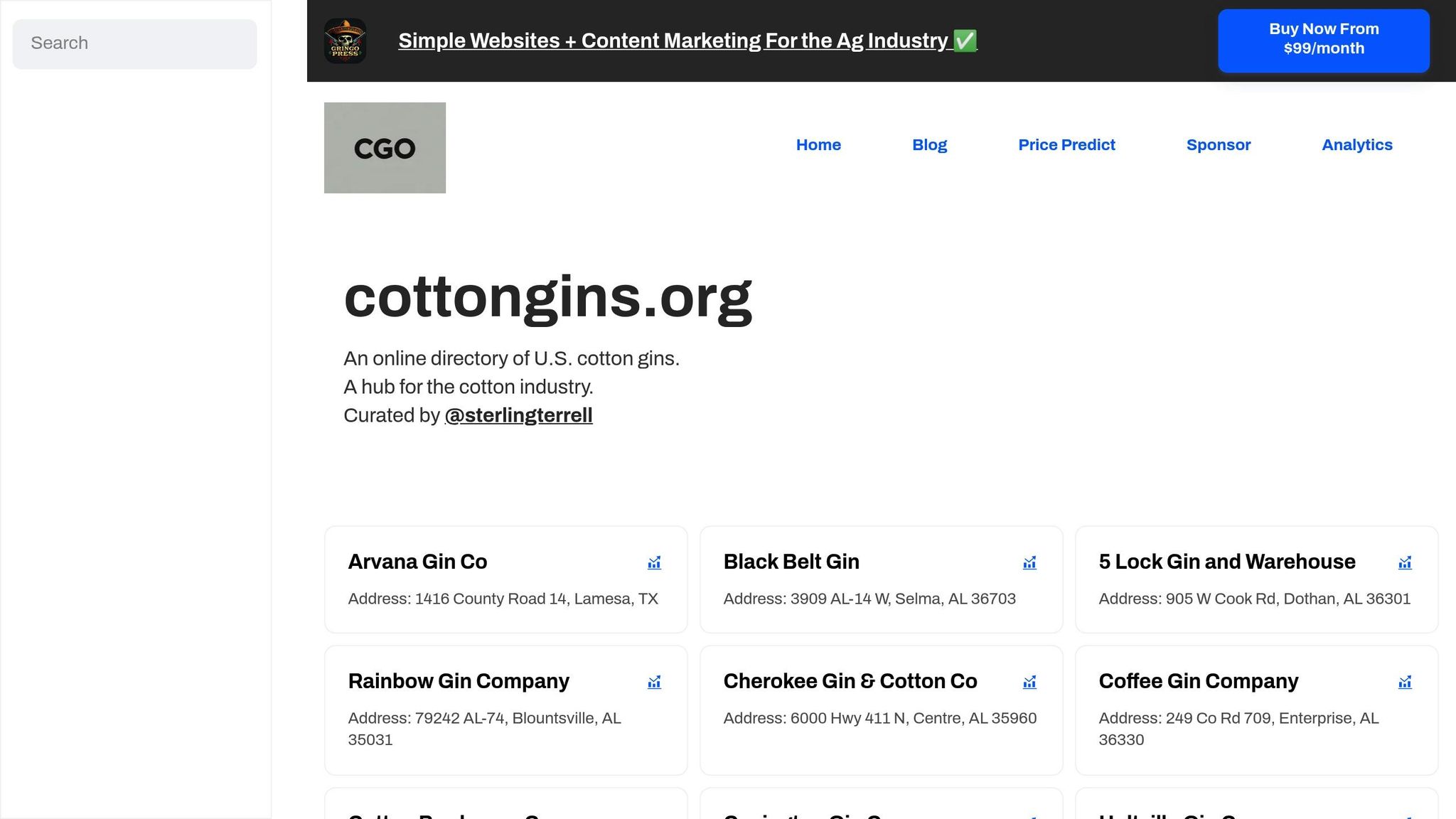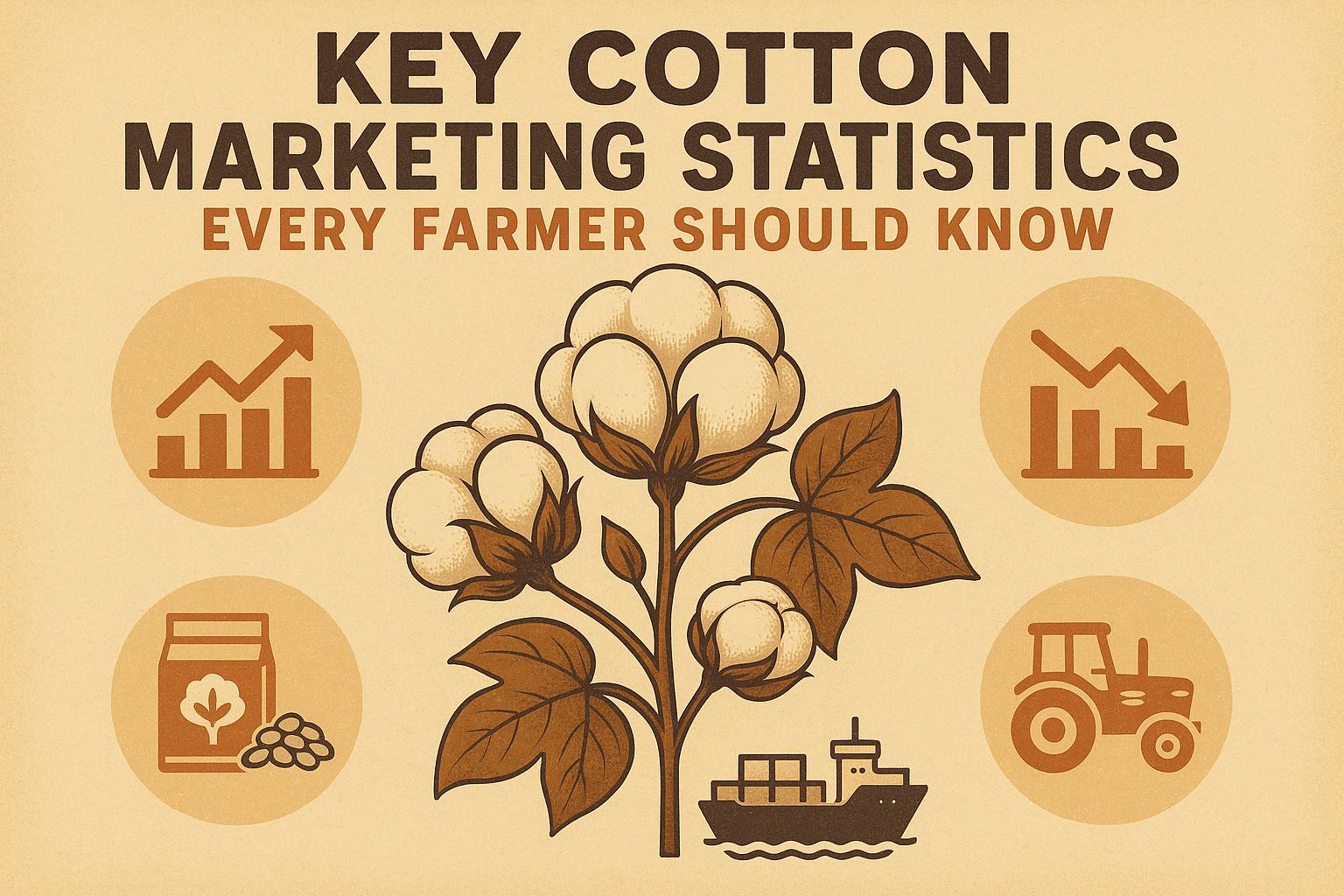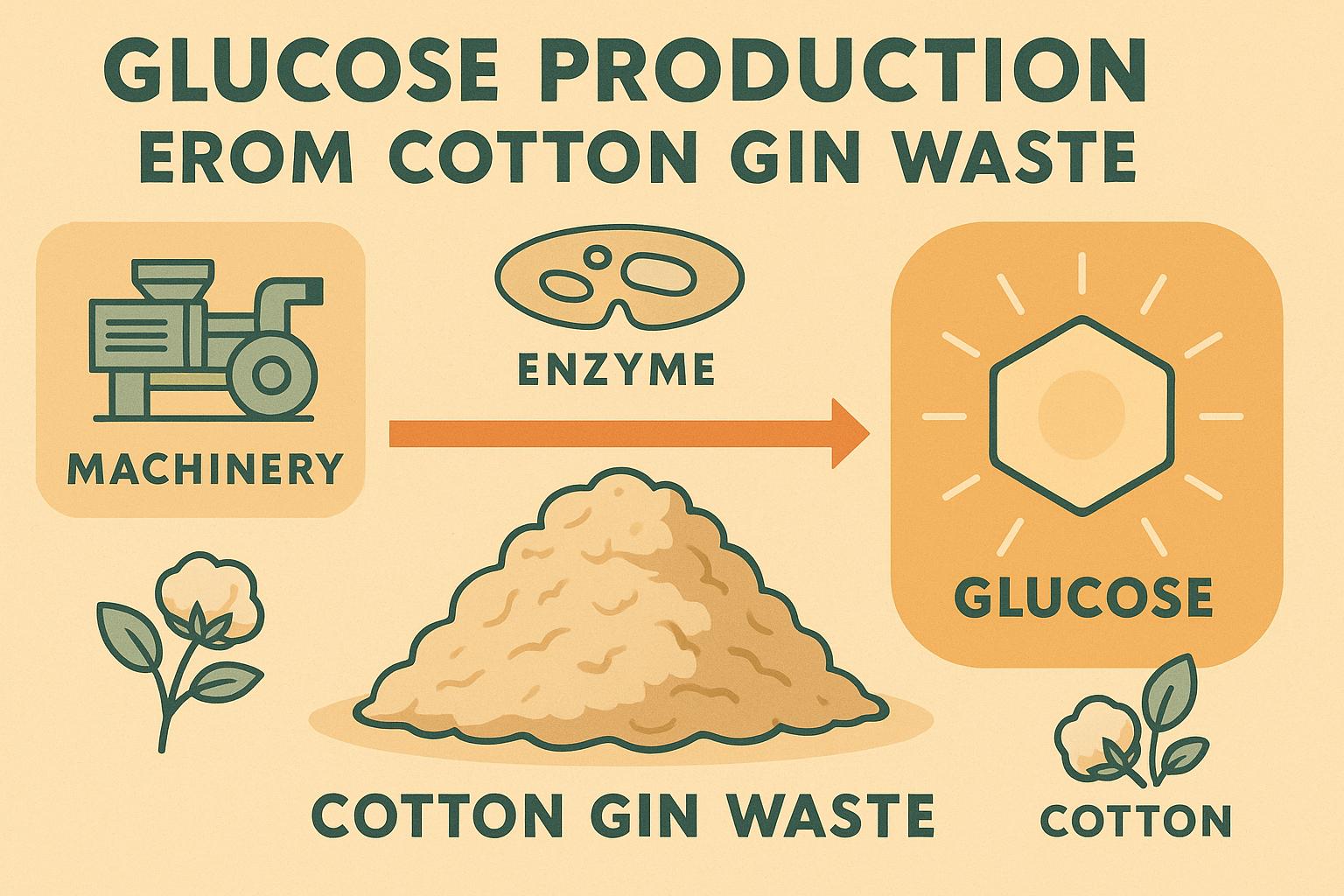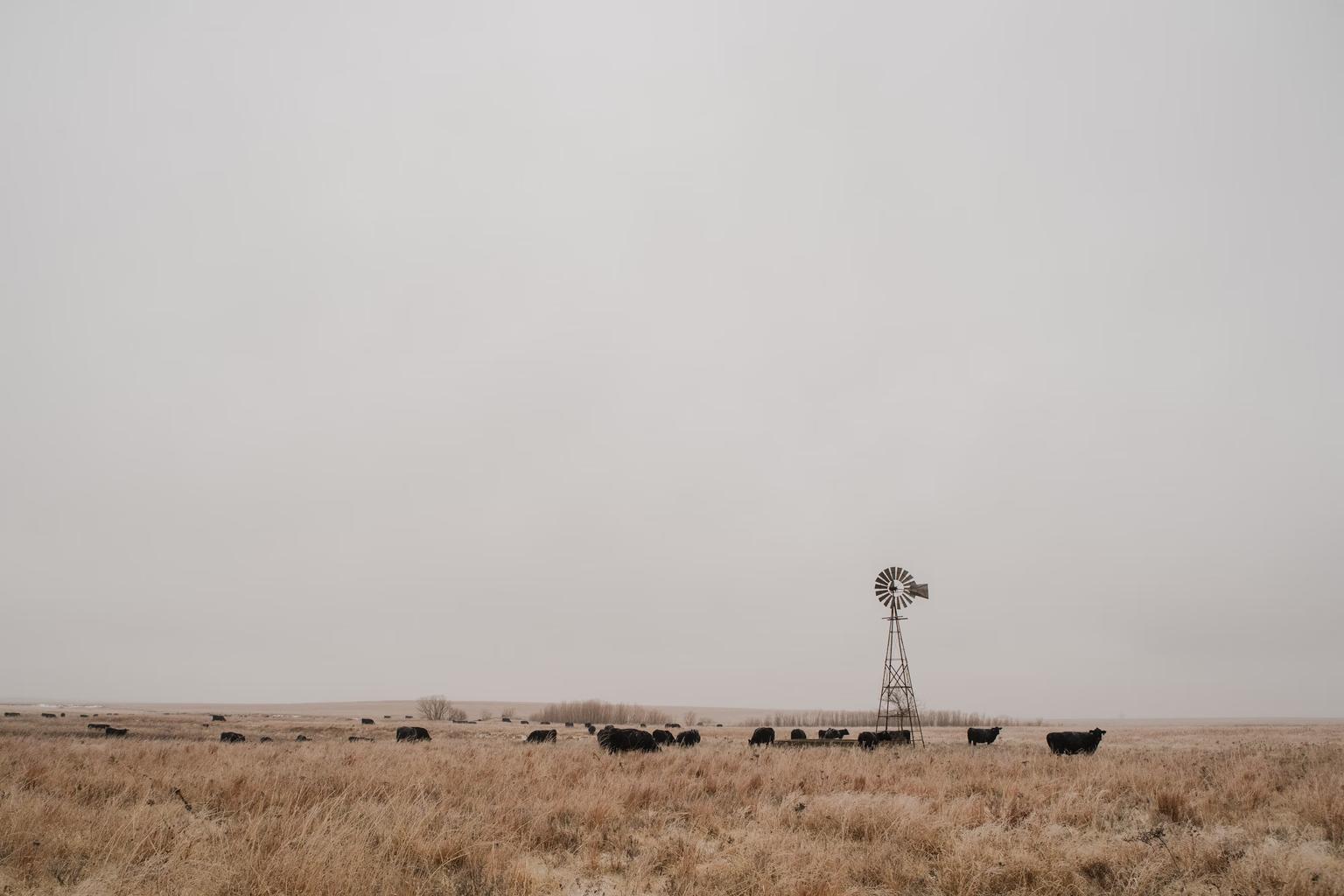Cotton farming is moving towards smarter, eco-friendly methods that save resources and cut costs. Farmers now use techniques like cover cropping, precision irrigation, and integrated pest management to improve soil health, conserve water, and reduce chemical use. Technology like GPS-guided tractors, drones, and soil sensors plays a big role in making these practices more effective.
Here’s what you’ll learn:
- How soil health management boosts cotton yields while reducing costs
- Why modern irrigation systems save water and improve crop quality
- Ways to control pests naturally with Integrated Pest Management (IPM)
- How renewable energy like solar panels is powering cotton farms
- Tips for using tools like drones and variable-rate technology
Farmers are also using certification programs to meet consumer demand for responsibly grown cotton. These steps are helping the cotton industry stay profitable while protecting resources for future generations.
Want the details? Let’s dive in.
A Regenerative Agriculture Future for Cotton Growers - Part 1
Soil Health Management in Cotton Farming
Sustaining cotton productivity over the long term hinges on maintaining healthy soil. When soil is teeming with organic matter and beneficial microorganisms, cotton plants thrive with stronger roots, better disease resistance, and higher yields. On the flip side, poor soil health can lead to increased costs, reduced productivity, and greater vulnerability to extreme weather.
Historically, cotton farming has been tough on soil. Practices like intensive tillage and continuous monoculture have stripped organic matter and damaged soil structure. But there's a shift happening. Farmers across the Cotton Belt are embracing methods that rebuild soil health while keeping their operations profitable.
Key Practices for Soil Health
Conservation tillage is one of the cornerstones of better soil management. By reducing or eliminating plowing, this approach minimizes disturbance to the soil. Systems like no-till and minimum-till leave crop residue on the surface, which not only protects against erosion but also helps retain moisture. Plus, this residue feeds soil organisms, sparking essential biological activity.
A popular variation, strip-till, strikes a balance between no-till and traditional tillage. It involves tilling only narrow strips where seeds are planted, leaving the rest of the field untouched. This method allows for precise fertilizer application while maintaining the soil's overall structure.
Cover cropping is another game-changer. By keeping living roots in the ground year-round, cover crops like crimson clover, winter rye, and Austrian winter peas protect the soil during the off-season. These crops add organic matter, fix nitrogen, and break up compacted layers, all while feeding beneficial microbes. For instance, cereal rye thrives in cooler weather and produces a dense biomass. When terminated before planting cotton, its residue suppresses weeds and helps conserve moisture. Similarly, crimson clover not only fixes nitrogen but also boosts microbial activity.
Crop rotation is a smart way to break pest and disease cycles while improving soil fertility and structure. Alternating cotton with crops like corn, soybeans, or small grains diversifies the soil ecosystem and reduces the buildup of cotton-specific pests. Different crops bring varying root structures and nutrient demands, keeping the soil balanced. A three- to four-year rotation that includes cotton, corn, soybeans, and small grains can rejuvenate soil and promote active soil biology.
Economic and Environmental Benefits
Healthy soil isn't just good for the environment - it makes financial sense, too. Higher organic matter levels improve water retention and reduce runoff and erosion, while better nutrient cycling cuts down on fertilizer costs.
There's also potential for extra income through carbon sequestration. As carbon markets develop, farmers with healthier soils might be able to sell carbon credits. On top of that, reduced tillage and cover cropping can lower fuel and labor costs by minimizing field preparation and equipment wear.
Practical Steps for Farmers
To make these benefits a reality, farmers should test their soil every 2–3 years. Soil tests reveal critical information like nutrient levels, pH, and organic matter content. Tracking these metrics over time helps farmers evaluate the impact of their management practices.
For a deeper dive, comprehensive soil health tests can measure biological activity, water infiltration, and aggregate stability. These insights are invaluable for fine-tuning decisions about tillage, cover crops, and nutrient management.
Building organic matter takes time, but the effort pays off. Farmers can increase organic matter by leaving crop residues in the field, using compost or manure, and planting cover crops. Composted materials are particularly effective - they release nutrients gradually and provide a stable organic matter source. Timing is key, especially with fresh manure, to avoid nutrient losses or crop damage.
Regenerative practices take a holistic view of the soil ecosystem. This means reducing soil disturbance, maintaining living roots, promoting crop diversity, and even integrating livestock when possible. For example, grazing cover crops with cattle not only adds manure to the soil but can also create an additional revenue stream.
Timing is everything when implementing these practices. Cover crops need to be terminated at the right stage to maximize soil benefits without interfering with cotton planting. Factors like weather, soil moisture, and equipment availability all play into this decision.
A gradual approach often works best. Farmers might start by reducing tillage on a small section of their land or experimenting with cover crops on less productive fields. This allows them to learn and adapt before scaling up across their entire operation. By taking it step by step, they can build healthier soils without overwhelming their resources.
Water-Efficient Irrigation Techniques
Water plays a crucial role in cotton farming, but in many regions, it's becoming an increasingly scarce resource. Thankfully, modern irrigation technologies are helping cotton farmers use water more efficiently while still achieving strong yields.
Traditional flood irrigation, which is still used in some areas, often results in significant water loss through evaporation and runoff. On the other hand, modern methods not only conserve water but also enhance crop quality and can reduce costs when adapted to the specific needs of a farm.
Modern Irrigation Methods
Drip irrigation is one of the most water-efficient systems available. By delivering water directly to the plant roots through tubes and emitters, this method minimizes water loss and ensures consistent soil moisture during critical growth stages. While installing a drip irrigation system can be expensive upfront, the long-term savings in labor and water, coupled with improved crop yields, make it a worthwhile investment.
Center pivot irrigation strikes a balance between efficiency and affordability. Modern systems now include features like low-pressure nozzles and variable rate irrigation (VRI), which adjusts water distribution based on field conditions. Using tools like GPS and soil moisture sensors, these systems can significantly reduce water waste compared to older models.
Soil moisture monitoring has revolutionized how farmers schedule irrigation. Wireless sensors placed throughout fields provide real-time data on soil moisture levels at different depths. With this information, farmers can fine-tune their irrigation schedules to avoid overwatering or underwatering, conserving water while ensuring optimal crop health.
Precision irrigation takes things a step further by integrating technologies like soil moisture sensors, weather data, satellite imagery, and crop growth models. These systems automatically adjust irrigation schedules and even account for variations in soil type, ensuring that every part of the field gets the right amount of water.
Comparing Irrigation Techniques
Each irrigation method offers unique benefits, making them suitable for different situations:
- Flood irrigation remains popular for its simplicity but is less efficient due to significant water loss from evaporation and runoff.
- Center pivot systems - especially those with VRI - are more efficient and adaptable, particularly for fields with uneven terrain.
- Drip irrigation is highly efficient, delivering water directly to the root zone, making it ideal for water-scarce areas.
- Micro-sprinkler systems provide flexibility for fields with irregular shapes or where wind conditions are a challenge.
These options allow farmers to choose methods that best suit their environmental and operational needs.
Adapting to Regional Conditions
Irrigation strategies often need to be tailored to local challenges. For example, in the Texas High Plains, where aquifers are depleting and high winds are common, many farmers are moving away from flood irrigation in favor of center pivot systems. These systems, combined with deficit irrigation - focusing water use on critical growth stages like flowering and boll development - help conserve water while maintaining yields.
In California’s San Joaquin Valley, where water is both expensive and tightly regulated, drip irrigation has become a popular choice. By targeting water delivery directly to the roots, growers manage limited water supplies more effectively than with traditional methods.
In the southeastern U.S., where rainfall is more abundant, supplemental irrigation during dry spells is common. Farmers often use flexible systems like traveling guns or linear move irrigators to respond quickly to changing weather. Soil type also plays a role in irrigation decisions - sandy soils require frequent, lighter watering, while clay soils can handle larger, less frequent applications.
In regions dealing with saline water, drip irrigation can help manage salt buildup around the roots by maintaining consistent soil moisture levels. Some farmers also alternate between saline groundwater and higher-quality surface water to protect crop health.
The most successful cotton farmers design their irrigation practices around their unique local conditions. Factors like water rights, energy costs, labor availability, and field characteristics all play a role in determining the best approach. Many growers start by upgrading their most productive fields and gradually expand their water-efficient systems as resources allow.
Organic Pest Management and Ecosystem Health
Organic pest management taps into nature's own systems to control pests while aiming to minimize harm to the environment.
In a healthy ecosystem, pests are naturally kept in check by beneficial insects and microorganisms. By combining soil and water management with targeted pest control strategies, farmers can build fields that are more resilient to pest pressures.
Integrated Pest Management (IPM) Strategies
Integrated Pest Management (IPM) uses a mix of techniques to keep pest populations below levels that would cause economic damage. This approach relies on understanding pest life cycles, careful monitoring, and well-timed interventions.
Beneficial insects, like ladybugs and parasitic wasps, play a big role in natural pest control. To support these helpful allies, many farmers plant strips of flowering plants - such as sunflowers, cosmos, and native wildflowers - along the edges of their fields. These plants provide nectar and shelter throughout the growing season, creating a welcoming environment for beneficial insects.
Farmers also use tools like trap crops and pheromone traps to manage pests more precisely. Trap crops lure pests away from main crops, while pheromone traps use synthetic insect mating chemicals to attract and capture specific pests. By monitoring pest activity with these tools, farmers can decide when action is truly needed instead of relying on rigid schedules.
Cultural practices are another key part of IPM. For example, crop rotation interrupts pest life cycles by alternating crops like cotton with others that pests cannot thrive on. Cover crops not only improve soil health but also support beneficial insects, adding another layer of pest control.
Once IPM strategies are in place, farmers need to stay vigilant against pest resistance by diversifying their methods.
Resistance Management Practices
Preventing pest resistance means avoiding over-reliance on any single control method. One effective approach is planting refuge areas - sections of non-Bt cotton - where susceptible pests can thrive. These pests can breed with resistant ones, helping to slow the spread of resistance genes.
Rotating biological controls, such as predatory insects or parasitic wasps, also helps. A diverse habitat around field edges is another safeguard, as it supports a variety of natural enemies. This diversity ensures that if pests adapt to one method, others remain effective.
Farmers must regularly monitor their fields and adjust their strategies as needed. Many rely on field scouting and advice from local agricultural experts or university extension services to evaluate their methods and make timely changes.
This flexible, adaptive approach fits seamlessly with the broader sustainable farming practices covered earlier in the discussion.
sbb-itb-0e617ca
Technology and Innovation in Cotton Farming
The world of cotton farming is evolving rapidly, thanks to modern technology. These advancements are helping farmers make smarter decisions, use resources more efficiently, and manage crops with greater precision. By combining these tools with sustainable soil and water practices, cotton farming is becoming more eco-conscious and efficient.
Precision Agriculture Tools
Precision agriculture tools rely on data to fine-tune farming operations. For example, GPS mapping and drone imaging allow farmers to target specific areas for seeding, fertilizing, and watering. Field sensors provide detailed insights into soil conditions, working hand-in-hand with water-saving techniques already in place. Variable-rate technology adjusts inputs like fertilizers and pesticides based on the unique needs of different parts of a field, ensuring resources are used where they're needed most. Yield mapping systems, meanwhile, gather harvest data that can shape future planting and management decisions. To further boost efficiency, many farms are also turning to renewable energy solutions.
Renewable Energy Applications
Renewable energy is becoming a key part of cotton farming. Farmers are using solar panels and wind turbines to power irrigation systems and equipment, often supported by battery storage to ensure a steady energy supply.
Comparison of Precision Agriculture Tools
Here’s a quick look at some of the most commonly used precision tools in cotton farming:
| Tool Type | Primary Function | Adoption Considerations | Best For |
|---|---|---|---|
| GPS Guidance Systems | Field mapping and equipment guidance | Ideal for detailed field management | Larger-scale operations |
| Drone Systems | Crop monitoring and scouting | Easy to use and highly adaptable | Farms of all sizes |
| Soil Sensors | Monitoring moisture and nutrient levels | Helps with precise irrigation scheduling | Precision irrigation |
| Variable-Rate Controllers | Automated input application | Needs integration with farm management systems | Farms using precision techniques |
| Yield Mapping Systems | Harvest data collection | Guides future planting and management strategies | Data-driven operations |
These tools work together to promote sustainable farming practices. For example, smart irrigation controllers can adjust watering schedules based on weather forecasts and real-time soil moisture data. Similarly, precision application equipment ensures that organic pest control is applied only where needed, protecting beneficial insects and maintaining ecological balance.
Cotton Supply Chain and Community Resources
The success of sustainable cotton farming depends heavily on strong community ties and access to helpful resources. When farmers and cotton gins collaborate, they create a thriving supply chain by sharing knowledge, tools, and best practices. These partnerships are further strengthened through platforms that connect every part of the cotton supply chain, fostering communication and collective progress.
Role of cottongins.org in Cotton Farming

cottongins.org acts as a key resource for connecting cotton farmers with gins across the United States. The platform’s directory, which features a simple submission process, ensures up-to-date and thorough listings of cotton gins nationwide. This makes it easier for farmers to find and partner with local processors, streamlining operations and fostering collaboration.
Sponsorship and Community Engagement
The platform also provides businesses and organizations with opportunities to engage with the cotton farming community. Here’s how they can get involved:
- Sponsored Posts ($200 each): Businesses can highlight sustainable farming innovations through prominent posts that are also promoted on social media.
- Official Sponsorship ($200 per month): This includes logo placement for continuous visibility and a free Sponsored Post with an annual commitment.
- Featured Sponsorship ($400 per month): Offers premium visibility with top-tier placement and includes two free Sponsored Posts per year.
These sponsorship options not only support the platform but also help connect farmers with essential services and advancements.
Building a Cotton Network
By leveraging cottongins.org, farmers and industry professionals can build a robust cotton network. Whether it’s exploring gin listings, adding new entries, or utilizing sponsorship opportunities, the platform encourages communication and collaboration. This network not only strengthens relationships within the supply chain but also supports sustainability efforts across the cotton industry.
Conclusion: Pathways to Better Cotton Farming
Sustainable cotton farming is the backbone of long-term agricultural success. The strategies outlined in this guide offer practical ways for farmers across the United States to build operations that are both resilient and profitable.
At the heart of sustainable cotton production is soil health management. Practices like planting cover crops, reducing tillage, and increasing organic matter improve water retention and lower costs. These methods are a natural complement to water-efficient irrigation systems, which help conserve resources while maintaining strong yields.
Farmers can also benefit from organic pest management through Integrated Pest Management (IPM) strategies. These approaches reduce reliance on pesticides, combat resistance, and protect beneficial insects that contribute to healthier crops. Tools like GPS guidance and variable-rate applications make these methods not only environmentally friendly but also financially rewarding.
Incorporating renewable energy is another step forward. Solar-powered irrigation systems and wind energy installations are becoming more accessible, offering farmers the chance to reduce operational costs while lowering their carbon footprints.
Adapting to changing climates and market demands is critical. Farmers who leverage data-driven decision-making, prioritize soil health, and engage with their communities through platforms like cottongins.org are better positioned to succeed in an evolving agricultural landscape.
Effective water and soil management also strengthens resilience to extreme weather conditions. By employing techniques like diverse crop rotations and efficient irrigation, farmers can safeguard their operations against challenges like droughts, floods, and temperature fluctuations. These methods work together to create a system that supports both productivity and sustainability.
Ultimately, success in cotton farming comes from viewing these practices as interconnected. When soil health, water management, pest control, and modern technology align, they create operations that are more profitable, environmentally responsible, and prepared for the future.
FAQs
What are the main benefits of using cover crops in sustainable cotton farming, and how do they improve soil health?
Cover crops play a vital role in sustainable cotton farming, offering a range of benefits that go beyond just maintaining soil health. They help minimize soil erosion, increase soil organic matter, and enhance the soil’s ability to retain and absorb water effectively.
On top of that, cover crops stimulate microbial activity and encourage nutrient cycling, both of which contribute to stronger soil structure and improved overall health. This means the soil becomes more resilient and fertile, directly supporting sustainable cotton production while also positively impacting the environment. Healthier soils are better prepared to face challenges like drought and nutrient loss, making cover crops an essential part of environmentally conscious farming practices.
How does precision irrigation help save water and boost cotton yields compared to traditional methods?
Precision irrigation transforms water management in cotton farming by supplying the exact amount of water plants need, precisely when they need it. By leveraging real-time data - like soil moisture levels, weather patterns, and crop growth stages - this method ensures water is used wisely, reducing unnecessary waste.
When compared to traditional approaches, such as fixed watering schedules or surface irrigation, precision irrigation delivers impressive results. It can cut water use by up to 21% while boosting cotton yields by around 30%. By adjusting to ever-changing conditions, this technology not only maximizes water efficiency but also helps conserve resources, making it a win for both farmers and the environment.
How does Integrated Pest Management (IPM) help reduce chemical use in cotton farming, and what are the best ways to apply it?
Integrated Pest Management (IPM) offers a smarter approach to pest control in cotton farming by cutting down on chemical use. It combines natural techniques with strategic planning to manage pests effectively. The approach revolves around understanding pest behavior, keeping a close eye on pest activity, and applying eco-friendly methods like biological controls, crop rotation, and pest-resistant cotton varieties. The result? Less reliance on synthetic pesticides and a step toward healthier farming practices.
Farmers can put IPM into action by:
- Regularly scouting and monitoring their fields to catch pest levels early.
- Introducing natural predators or parasitoids to keep pest populations in check.
- Applying cultural practices such as crop rotation and planting pest-resistant cotton varieties.
By weaving these methods together, farmers can achieve efficient pest control while reducing their environmental footprint and dependence on chemicals.


